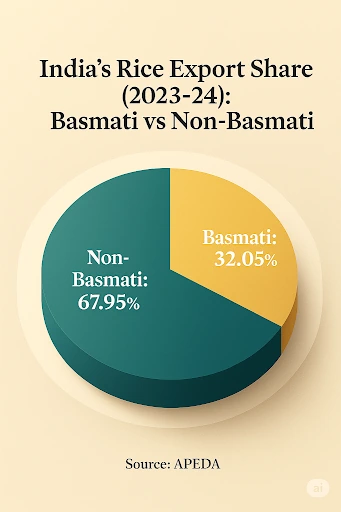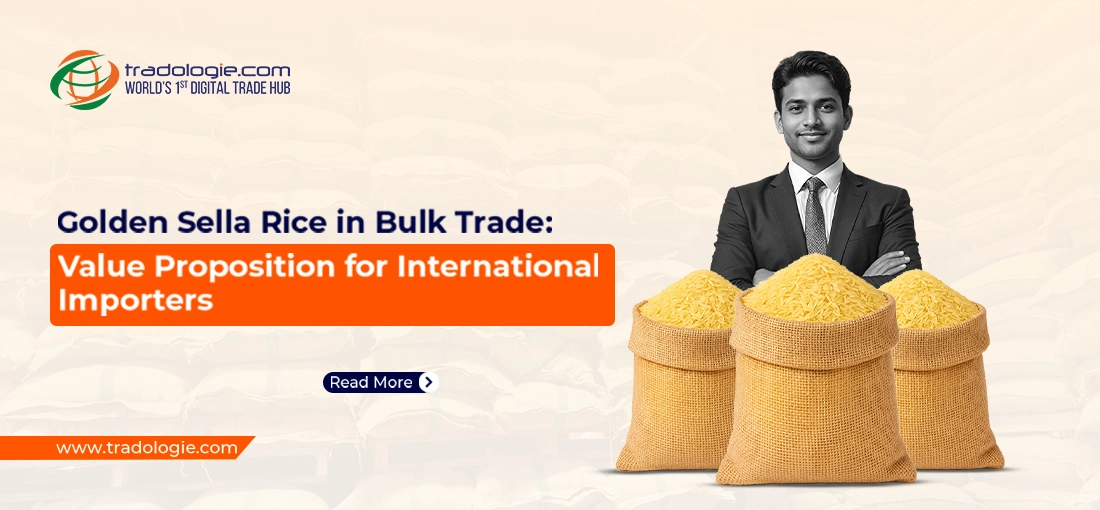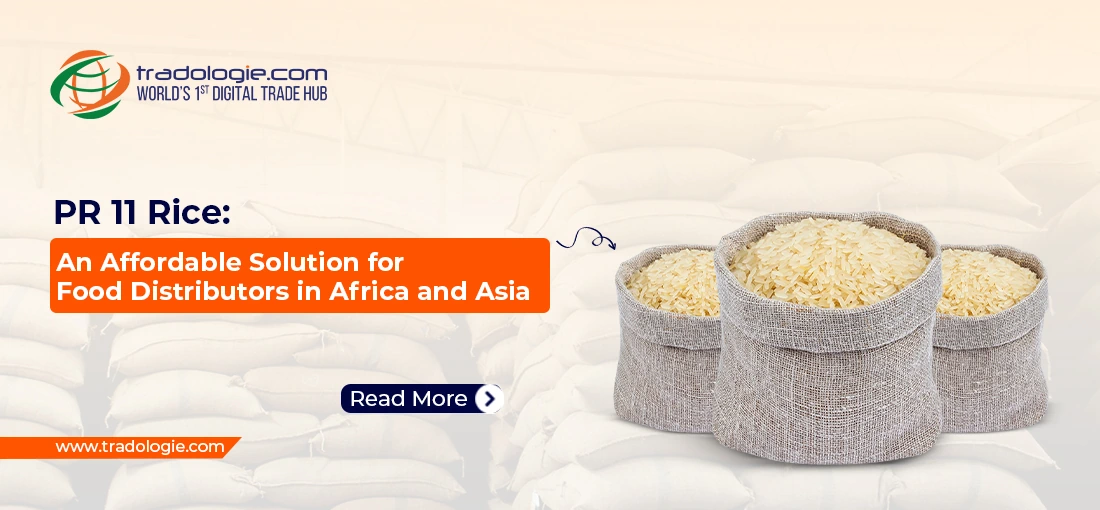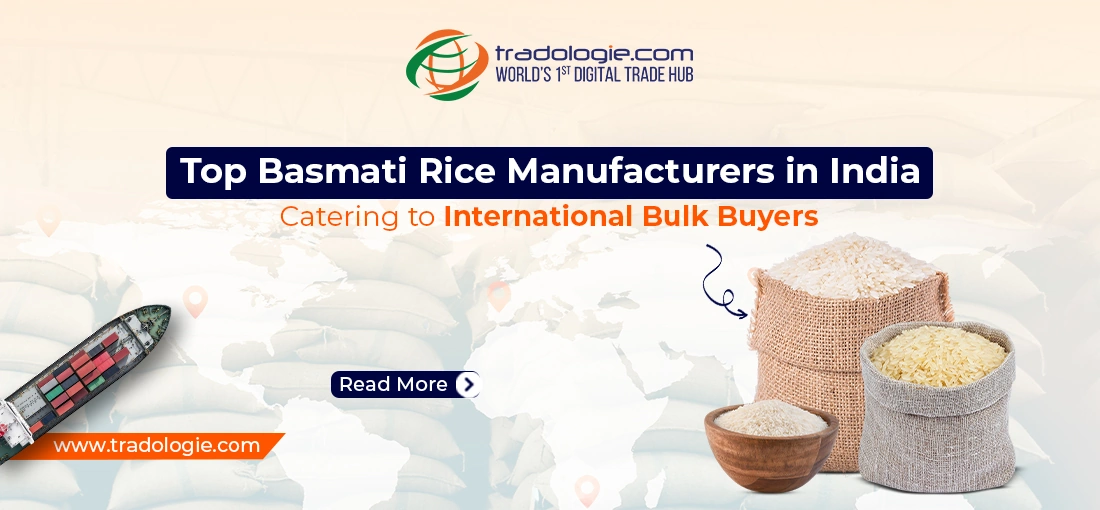How Many Types of Rice Exist in India's Export Ecosystem? A B2B Overview
Key Highlights:
- Diverse Rice Basket - India exports hundreds of rice varieties, but trade majorly revolves around Basmati and non-Basmati categories.
- Basmati Segment - Premium aromatic rice with top 5 varieties: 1121, 1509, Pusa, Traditional, Sugandha.
- Non-Basmati Segment - Affordable and versatile with top 5 varieties: Sona Masoori, IR 64/36, Swarna, Sharbati, Jeera Samba.
- Global Demand - Basmati leads in the Middle East, Europe, North America, while non-Basmati drives bulk trade in Africa and Asia.
- In the fiscal year 2023-24, India consolidated its leadership in the global rice trade with total rice exports touching 16.359 million metric tonnes (MMT)
- Strategic Edge - India's rice export ecosystem blends premium branding with high-volume affordability, ensuring leadership in global trade.
Introduction :
India is known as the rice basket of the world. In the fiscal year 2023-24, it consolidated its leadership in the global rice trade with total rice exports touching 16.359 million metric tonnes (MMT). Of this, 5.243 MMT
came from the Basmati segment, accounting for 32.05%, while 11.117 MMT came from non-Basmati varieties, representing a commanding 67.95% share.
India's rice basket is incredibly rich, with countless varieties growing across its many landscapes. In fact, the agriculturally rich nation exports hundreds of varieties of rice globally through a network of widespread bulk rice exporters. But in the world of global trade, this diversity simplifies into just two main categories, Basmati and non-Basmati, each with its own charm, consumer following, and place on the world's plate.
This informative piece of blog will discuss some of the main varieties of Basmati rice and non-Basmati rice exported by India globally. So let us get started.

Basmati Rice: The Premium Aromatic Segment
Basmati rice continues to be India's crown jewel in global markets. There is no surprise that it is celebrated for its fragrance, long-grain elegance, and premium appeal. Cherished by importers across the Middle East, Europe, and North America, it is widely used in gourmet shelves, HORECA food menus, and premium food brands. This makes it earn not just higher margins, but also a place of pride on the world's table.
Top five Basmati rice varieties exported from India include:
- 1121 Basmati Rice - Renowned for its extra-long grain and post-cooking elongation, it is a staple choice among high-volume buyers and Basmati rice exporters targeting the Middle East and Gulf region.
- 1509 Basmati Rice - A relatively high-yielding variety, it offers excellent cooking qualities and affordability, making it attractive for bulk rice suppliers seeking scale in South Asian and African markets.
- Pusa Basmati Rice - Noted for its distinct aroma and slender grain, it strikes a balance between traditional appeal and modern trade requirements.
- Traditional Basmati Rice - This heritage variety is globally recognized for its authentic flavor and cultural significance, often positioned in niche premium markets.
- Sugandha Basmati Rice - A fragrant yet cost-effective variety, well-suited for bulk rice sellers catering to both retail packs and institutional buyers.
Collectively, these varieties elevate India's reputation as the world's leading hub of Basmati rice suppliers, ensuring quality, consistency, and heritage branding on a global scale.
Non-Basmati Rice: The Workhorse of Trade
If Basmati epitomizes premium appeal, non-Basmati rice represents scale and volume. Accounting for nearly 68% of total exports, these varieties cater to diverse markets — from food security programs in Africa to mainstream consumption across Asia. Their competitive pricing, adaptability, and versatility make them indispensable for bulk rice exporters and large procurement agencies.
Top five non-Basmati rice varieties exported from India include:
- Sona Masoori - A medium-grain, lightweight variety popular across the US, Middle East, and Asian diaspora markets for its affordability and everyday use.
- Parboiled Rice (IR 64, IR 36, etc.) - Known for its nutritional retention and resilience in cooking, it dominates bulk procurement channels, particularly in Africa and Asia.
- Swarna Rice - A widely cultivated variety, valued for its cost efficiency and steady supply chain, making it a cornerstone for bulk rice sellers engaging in large-scale exports.
- Sharbati Rice - Often referred to as the “affordable Basmati”, it enjoys strong traction among buyers seeking premium attributes at accessible price points.
- Jeera Samba Rice - A short-grain aromatic rice, primarily demanded in Southeast Asia, known for its cultural integration into regional cuisines.
With these offerings, India has entrenched itself as the preferred source for non-Basmati rice procurement, supporting food systems across continents.
Basmati vs Non-Basmati Rice (Export Perspective)
| Attribute | Basmati Rice | Non-Basmati Rice |
|---|---|---|
| Grain Type | Long-grain, aromatic, premium quality | Short/medium/long grain, non-aromatic |
| Market Positioning | Value-driven, premium segment | Volume-driven, affordable segment |
| Export Share (FY24) | 5.243 MMT (32.05% of India's exports) | 11.117 MMT (67.95% of India's exports) |
| Target Markets | Middle East, Europe, North America | Africa, Asia (bulk-demand regions) |
| Buyer Profile | Retailers, premium food brands, HORECA | Wholesalers, public procurement, bulk buyers |
Strategic Positioning in Global Trade
The dichotomy between Basmati and non-Basmati exports underscores India's dual advantage: premium branding through Basmati and high-volume fulfillment through non-Basmati rice. For importers, this diversity ensures access to both heritage-driven premium grains and cost-effective bulk solutions, depending on consumer segments and market dynamics
At the same time, India's network of bulk rice suppliers and exporters provides seamless integration between farmers, millers, and global buyers — enhancing transparency, efficiency, and reliability in the supply chain.
Conclusion
India's rice export performance in 2023-24 reaffirms its stature as the world's rice powerhouse. With Basmati sustaining its premium identity and non-Basmati driving scale, the country offers unmatched versatility to international buyers. For global importers, aligning with Basmati rice suppliers and bulk rice exporters from India is not merely a procurement choice, but a strategic partnership with the epicenter of the world's rice economy.

.webp)



